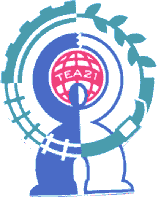The Impact of TEA-21 in Highway Safety Programs
The Transportation Equity Act for the 21st Century, or TEA-21, authorizes $218 billion with approximately $177 billion for highways. A key feature of the Act is the guaranteed level of federal funds -$198 billion- for surface transportation through Fiscal Year (FY) 2003.
 One
of the most positive impact of this legislation in terms of highway surface
transportation, is that it has provided several new initiatives to create
a safer highway network and operations, as well as safer vehicles that
will operate on the system.
One
of the most positive impact of this legislation in terms of highway surface
transportation, is that it has provided several new initiatives to create
a safer highway network and operations, as well as safer vehicles that
will operate on the system.
The DOT as well as AASHTO has set high goals for safety in their Strategic Plan, namely a 20 percent reduction in highway crashes, injuries, and deaths, over the next 10 years. In principle, FHWA also foresees that the new legislation will be an integral component in assisting SHA’s in achieving this goal.
An overview on the safety initiatives and programs included in the bill that will be of benefit to the Puerto Rico DTPW and its Highway and Transportation Authority are summarized below:
In the area of the construction
The Interstate Maintenance, National Highway System, and Surface Transportation Program (STP) will provide aproximately $120 billion in funding of which will impact highway safety through improved geometrics, safety hardware, pavement condition, signs, and markings. Specifically, it will allow state highway agencies to use up to 15 percent of STP funds assigned to rural areas for minor collectors that were not previously eligible for safety improvements.
These funds also applies to interstate roadways, pedestrian, bicycle, and other non-road public transportation facilities. State highway agencies would need to maintain an updated database of those hazards and consider them in the context of all high hazard projects within their network.
Traffic calming was specifically named as being eligible if it will be solving a safety hazard on their highway network priority list.
Safety and its effect on alcohol-impaired driving
The Section 402-Highway Safety Program was reauthorized. There was also an increase in the Section 410 alcohol-impaired driving program, as well as creation of occupant protection and highway database improvement incentive grant programs.
The Motor Carrier Safety Assistance Program was also authorized at $579 million and funding is available to improve related information systems.
Funding in the National Intelligent Transportation System research program for integration of air bag technology and other onboard safety systems, as well as a provision to advance the implementation of smart air bags were also included in the bill.
 The
transfer of Federal-Aid construction funds to the Highway Safety Program
or Hazard Elimination Program was also included. This provision deals
with repeat offenders and is intended to get tougher with drunk drivers.
The
transfer of Federal-Aid construction funds to the Highway Safety Program
or Hazard Elimination Program was also included. This provision deals
with repeat offenders and is intended to get tougher with drunk drivers.
There are two new incentive grant programs that could achieve the highly desired effect of improved safety program coordination at the state level, as proposed by the Administration. TEA-21 contains a $500 million incentive grant program for states that pass and enforce a law where driving with a Blood Alcohol Concentration (BAC) of 0.08 is per se driving while intoxicated.
There is another $500 million authorization for states that have higher than average seat belt utilization or are improving their seat belt use numbers above historic levels. Coordination is a key for these programs, since funding can go either to Section 402- Highway Safety Program activities or any Federal-aid construction project.
FHWA and the National Highway Traffic Safety Administration (NHTSA) will jointly administer the programs. The implementation of regulations will require that the state DOT and Governors Highway Safety program managers coordinate the expenditure of the funds.
The impact of TEA-21 in the MPO’s
The revision of Metropolitan Planning Organization’s (MPO) statewide and metropolitan planning requirements is perhaps the single most important element in TEA-21 for advancing highway safety. The factors to be considered in the planning process were reduced to seven, but for the first time safety will be incorporated throughout the process.
 FHWA
and State highway agencies will work with the MPO’s on revising the planning
regulations with emphasis in identifying best practices and development
of new tools which will consider safety as a factor. FHWA has also been
working with the road safety audit process as a method to focus
on safety during all the highway development/ construction phases.
FHWA
and State highway agencies will work with the MPO’s on revising the planning
regulations with emphasis in identifying best practices and development
of new tools which will consider safety as a factor. FHWA has also been
working with the road safety audit process as a method to focus
on safety during all the highway development/ construction phases.
In terms of research, development, and technology transfer activities, the law has provided the contractual authority that will improve the delivery of effective safety measures. A special funding for technology deployment, training and education, and increases in the University Transportation Center programs is provided as an incentive to achieve these goals.
Adapted from TEA-21: A “Safety Sweetener” by M. Trentacoste (FHWA).